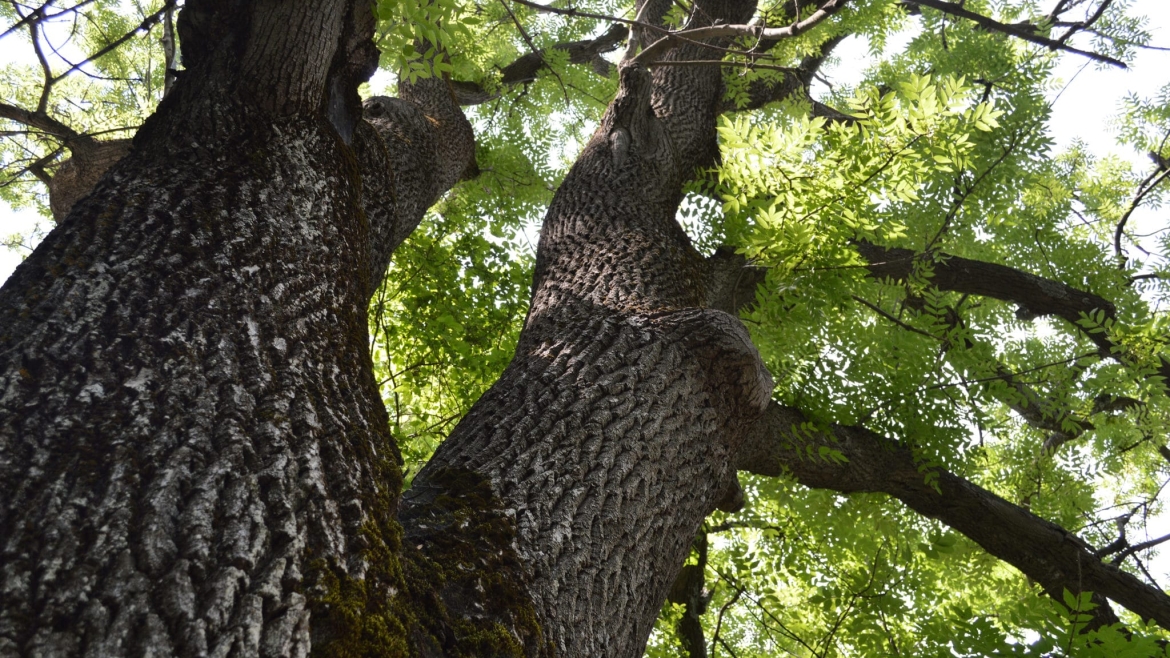Ash trees have been a staple of Colorado’s urban forests for decades. Their tall stature graces neighborhoods from Fort Collins down to Castle Rock. But if you live along the Front Range, your ash tree might be facing a serious threat known as the emerald ash borer (EAB).
If you’re asking, “When should I treat my ash tree for emerald ash borer in Colorado?” you’re not alone. The timing of treatment is critical. Miss the window, and your tree could already be in decline.
What Is the Emerald Ash Borer (EAB)?
The emerald ash borer is an invasive beetle originally from Asia. It was first confirmed in Colorado in 2013 in the city of Boulder, and it has been spreading ever since.
These non-native insects specifically target ash trees, boring through the bark and feeding on the tissue underneath. This tissue is one of the most important parts of the tree, as it moves nutrients and water through it. Over time, EAB starves the tree from the inside out.
This isn’t just a minor nuisance. EAB can kill a mature ash tree in 2–4 years, and it’s already caused millions of dollars in damage across the Midwest and Northeast. Now, it’s Colorado’s turn to fight back.
Where Is EAB in Colorado Now?
As of now, the emerald ash borer has been found in multiple Front Range communities, including Boulder, Longmont, Lafayette, Louisville, Westminster, Broomfield, Thornton, Denver metro, Arvada, and Golden.
While it hasn’t been confirmed in every city along the Front Range, experts believe it’s only a matter of time. The pest spreads both naturally and through the movement of firewood or tree debris. If you live in Fort Collins, Loveland, Parker, Castle Rock, or Colorado Springs, now is the time to prepare, even if you haven’t seen EAB yet.
When to Treat for Emerald Ash Borer in Colorado (Seasonal Timing)
The best time to treat for emerald ash borer in the Front Range is between mid-May and mid-June.
Why that window?
Because that’s when the beetles are emerging and beginning their destructive lifecycle. Applying treatment during this period ensures the tree can absorb the insecticide before larvae start tunneling under the bark.
Here’s a general breakdown:
- May – June: Prime treatment window. Apply trunk or soil injections of systemic insecticide.
- July – August: Still effective, but not ideal. Treatment may be less absorbed in drought or heat stress.
- Fall – Winter: Too late for treatment, but a good time for planning and inspection.
- Early Spring (March – April): Preparation phase. Hire a certified arborist to assess the tree and schedule treatment.
Although it’s best to follow the general timing mentioned above, if your ash tree is already showing signs of infestation, don’t wait. The sooner you act, the better your chances of saving it.
How to Identify an Ash Tree (and Confirm It’s at Risk)
Before you panic, make sure you’re looking at an ash tree. Here’s how to identify one:
- Leaves: Compound leaves with 5–9 leaflets (they look like a feather).
- Bark: Ridged and furrowed bark that often forms a diamond pattern.
- Branches: Grow directly opposite from one another on the twig.
- Seed Pods: Long, canoe-shaped samaras (winged seeds).
If you’re not sure, a certified arborist at Good People Tree Service can confirm it quickly.
How to Spot Emerald Ash Borer Damage
EAB infestations are sneaky. The beetles do their damage from the inside out, and by the time the signs are visible, the tree is already under attack.
Look for:
- Thinning canopy: The top of the tree dies first.
- D-shaped exit holes: About the size of a grain of rice.
- S-shaped tunnels under the bark.
- Epicormic shoots: Sprouts growing from the trunk or base.
- Increased woodpecker activity: They feast on EAB larvae.
If you see one or more of these signs, it’s time to call an expert.
Why Timing Matters More in Colorado
Colorado’s Front Range climate is unique. We deal with dry summers, variable spring moisture, and harsh winters. These conditions can affect how well a tree absorbs treatment. In years of drought or heat, the uptake of insecticide can be slower, so proper hydration and timing are critical.
You only need to treat every 2–3 years, depending on the product used and the health of your tree, but consistency is key.
Treatment Options (And What Actually Works)
There are several treatment methods for EAB, but not all are appropriate for Colorado’s conditions.
Most effective options include:
- Trunk injection with Emamectin Benzoate (effective up to 3 years)
- Soil injection with Imidacloprid (usually annual)
- Basal trunk sprays (less effective in mature trees)
DIY options often fall short. For large trees or high-risk areas like Lafayette, Westminster, or Denver, professional treatment is the safest bet.
Do All Ash Trees Need to Be Treated?
Not necessarily. Here’s how to decide:
- Healthy, well-placed trees in a high-risk area: Treat.
- Stressed, diseased, or poorly located trees: Consider tree removal.
- Young ash trees: May not be worth the long-term investment.
Every tree is different, which is why we always recommend a personalized assessment.
Don’t Wait Until It’s Too Late
If you’re located anywhere along the Front Range, the emerald ash borer is either already here or on its way.
Treating at the right time (May through mid-June) can mean the difference between saving your ash tree and losing it.
Call Now to Protect Your Trees
At Good People Tree Service, we’re local experts who know what works here in Colorado. We offer professional EAB treatment, honest advice, and full tree health evaluations across the Front Range. Call us today or request an estimate online to protect your ash trees before it’s too late.

